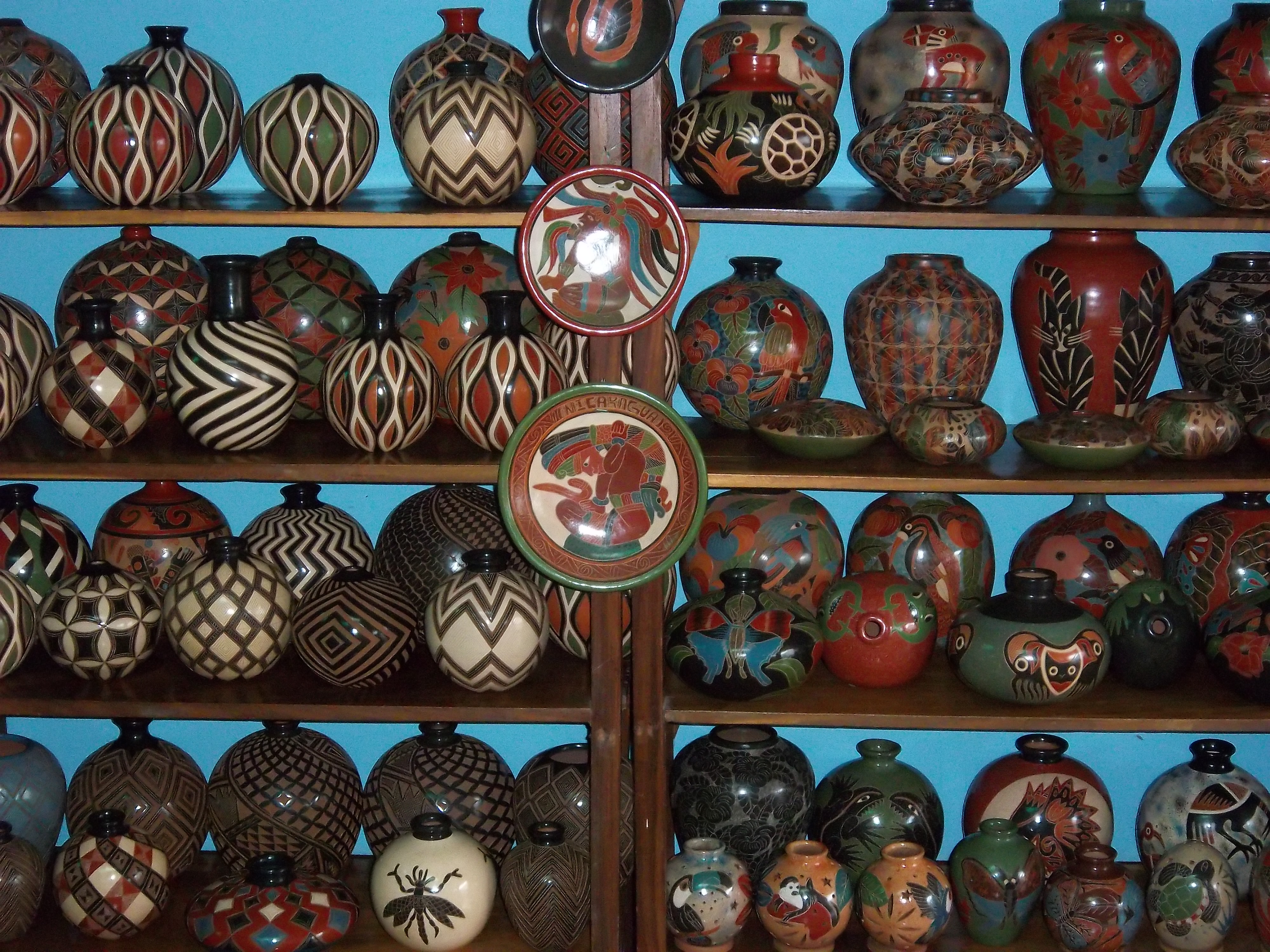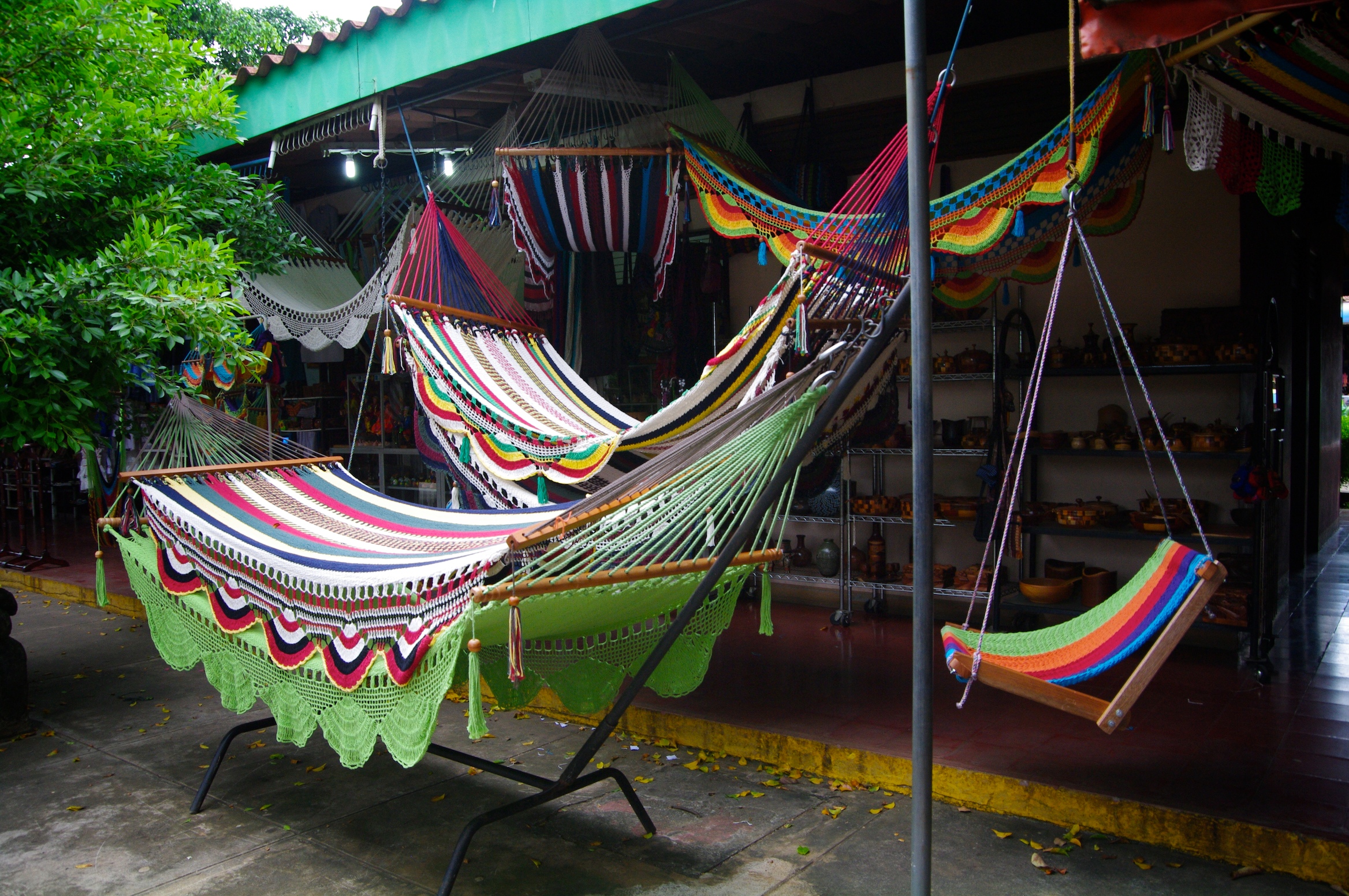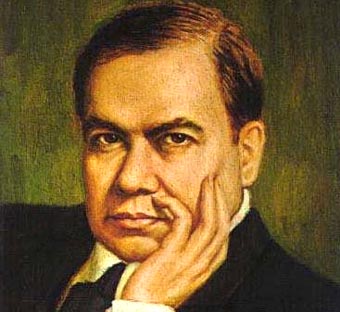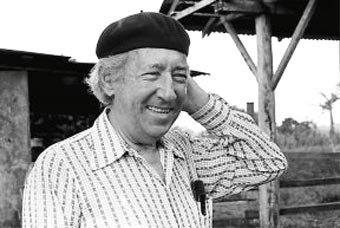Even though
Nicaragua isn’t really known for its major contributions to the art world, they
do have their own versions. Much of their artistic talents lie in the
handicrafts category. And when it comes to handicrafts, they are particularly
known for their woven arts, leather work, and ceramics.
Painting has been
an important artistic stronghold for many of Nicaragua’s artists. Most of the
prominent painters have emerged in the 20th century. One artist has
earned himself the moniker “father of modern art”: Rodrigo Peñalba. Known for
his murals, he tends to use a neo-classical style that intertwines the
struggles and faith that remain central to many Nicaraguans.
 |
| Armando Morales, "Spook Tree" |
Another artist,
Armando Morales, is known around the world for his works. He first became known
internationally when his painting “Spook Tree” was acquired by the Museum of
Modern Art in New York in 1956. Although many of his subjects tend to be the
land, rainforests, and people of Nicaragua, he painted in a semi-abstract and
quasi-surreal styles.
There are a number
of public markets across the country that are well-known places for finding
many of the handicraft goods. Probably one of the most famous of them all is
the Masaya Market in the city of Masaya. This is a great place to find all
kinds of arts and handicrafts like handmade hammocks. San Juan de Oriente is
another famous market; it’s especially known for its varieties of ceramics. The
city of Managua has many art galleries that showcase the works of Nicaraguan
artists.
 |
| Some myths and traditions were brought over by the Spaniards, like La Gigantona. |
The earliest forms
of literature from this area mainly consisted of pre-Columbian myths. These
stories were passed down from generation to generation by word of mouth. Many
of these myths were used as explanation for the world around them. As the
Spanish arrived, they introduced the Spanish language to those who were already
living there.
The first major
literary work is called El Güegüense, an anonymously written theatrical work. First
performed during the 16th century, this is one of the oldest
theatrical works in the Americas. What’s amazing is that it’s been passed down
all these years until someone finally thought to write it down in 1942!
In Nicaragua and
other Spanish-speaking countries, a Spanish-American movement known as
Modernismo began to emerge during the 19th century. It was more or
less a merging of various genres that were popular in Europe during the time,
like Symbolism, Romanticism, and Parnassianism. Diction was highly stylized and
poetic, and topics included passions, desires, and visions. Although generally,
it tended to be anti-political, it was difficult to bring in the social issues
that contributed to people’s struggles without mentioning it at all. One artist
often revered as the “Father of Modernism” is Rubén Darío. He went on to
influence other writers and poets such as Chilean Pablo Neruda and Nicaraguan
Ernesto Cardenal.
During the late
1920s, poet José Coronel Urtecho influenced a movement called Vanguardia. It
initiated a literary commentary through harsh criticism, intellectual scandal,
and confrontational expression. It encompassed several other genres such as
Surrealism.
Up next: music and
dance





No comments:
Post a Comment